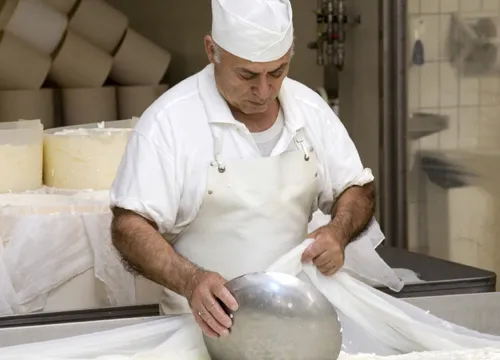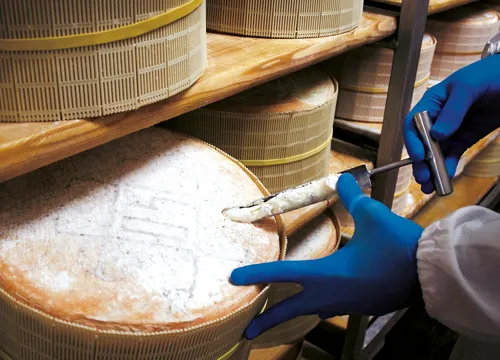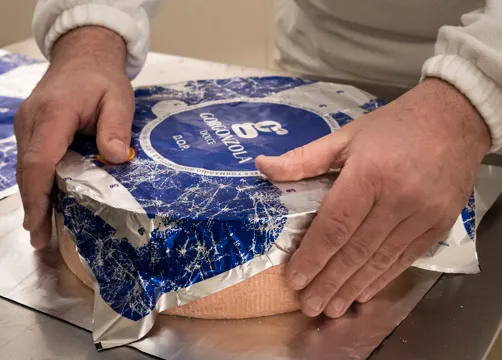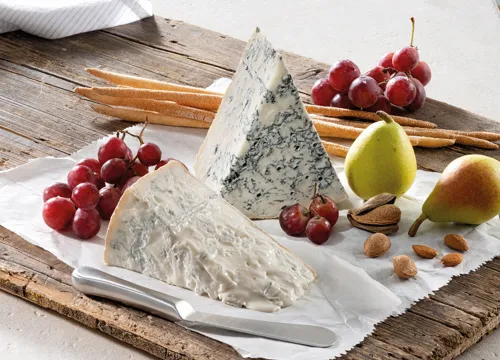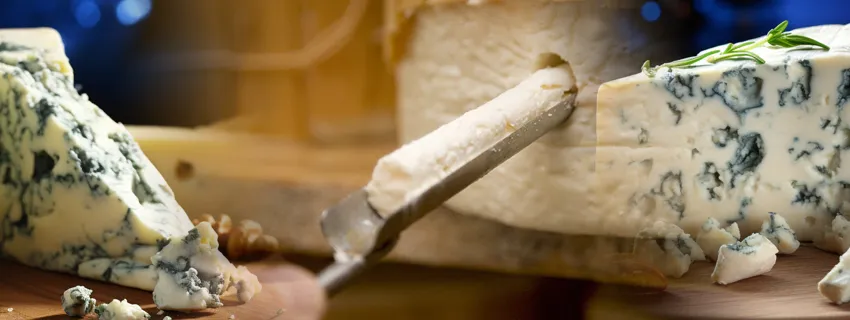Published:
Author: Antonio Maria Guerra
Gorgonzola Cheese

Gorgonzola cheese PDO is one of the most famous blue cheeses from Italy. It takes its name from the city of Gorgonzola, generally considered its birthplace. Much of the reputation of this dairy specialty is due to its particular flavor, coming from the edible molds in its paste. Let’s find out the origins of this delicacy, together with a great number of informations and interesting facts.

What is Gorgonzola cheese?
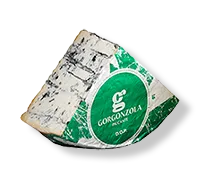 ‘Gorgonzola’ is one of the Italian dairy specialties most known and appreciated in the world. It’s possible to assume that its birth dates back to the ninth century, in a territory that for some scholars would coincide with the current province of Milan, for others with that of Lecco (both these cities are located in the Italian region of Lombardy).
‘Gorgonzola’ is one of the Italian dairy specialties most known and appreciated in the world. It’s possible to assume that its birth dates back to the ninth century, in a territory that for some scholars would coincide with the current province of Milan, for others with that of Lecco (both these cities are located in the Italian region of Lombardy).
It’s a ‘blue cheese’, produced using a particular technique, inducing the formation of edible molds: these molds strongly influence its flavor and appearance, characterized by the typical green/blue streaks. There are two types of it: the sweet one (soft and creamy) and the spicy one (harder and slightly friable): the latter is more seasoned. In 1996 the European Union assigned to Gorgonzola the Protected Designation of Origin (PDO), formalizing de facto its great qualities.
In this article we’ll show you the production method currently used for Gorgonzola cheese. To read it, please click this LINK.
As already mentioned in the previous paragraph, the town of Gorgonzola is generally considered the birthplace of Gorgonzola. Although this may not be true, at least not entirely, this place has certainly played a fundamental role in the history of this cheese. It should not therefore surprise that its original name was ‘Gorgonzola Stracchino’ (or ‘green Stracchino’) (*1).
Notes
*1: The name ‘stracchino’ shows that, in the past, this cheese was produced using the milk of the cows returning from the summer pastures: for this reason, they were very tired, in Lombard dialect ‘stracche’, hence the word.

The history of Gorgonzola cheese.
There are not many reliable testimonies about the birth of Gorgonzola: it’s generally traced back to the year 1007, during the Middle Ages. Even if this date were not precise, it would be still very useful to understand that this specialty has a thousand-year tradition. There are just a few information also about the place of origin of the cheese: a great part of the sources obviously claim that it’s the town of Gorgonzola (hence the name).
Read more
Others suggest it could be Pasturo, a small town in the province of Lecco, very famous for its ancient dairy tradition (*1). The only certainty is that we are dealing with a very traditional Lombard and Piedmontese product (*2): a product that started to be commercialized thanks to the local river network (*3) and that, over the years, became very famous even outside the Italian peninsula.
Notes:
*1: The Caves of Pasturo, located under the ‘Grigne’ mountains, have always been renowned for their environment, particularly suitable for the maturation of cheeses, both in terms of humidity, temperature and ventilation.
*2: Lombardy is one of the most important Italian regions.
*3: The ‘Navigli’ and the Ticino river.

… the legend.
As it happens to many food and wine specialties of ancient traditions, Gorgonzola too has a legend telling its origins. According to this legend, a distracted cheesemaker added fresh curd to some other he had previously prepared and forgotten. After a few days, he realized with great pleasure that he had inadvertently invented a very special type of cheese, whose particular taste derived from a particular kind of molds grown inside of it.

Gorgonzola cheese
THE MOST TRADITIONAL PRODUCERS
This article is the result of the collaboration between WebFoodCulture and the Consorzio per la Tutela del Formaggio Gorgonzola, organization gathering the most traditional producers of the famous dairy specialty.


Types of Gorgonzola cheese.
According to the procedural guideline for Gorgonzola PDO, there are two main types of this cheese:

Spicy Gorgonzola.
Also known as ‘Gorgonzola del nonno’ (‘Grandfather’s Gorgonzola’), this type of Gorgonzola, as its name suggests, has a much stronger and spicier flavor than the sweet one.
Continua
It has a thick, almost friable consistency. Its aging lasts for a minimum of 80 days up to 270.
These characteristic make it fairly similar to other two cheeses: Stilton and Roquefort.

Sweet Gorgonzola.
This type of Gongonzola cheese is creamy and slightly spicy. Its aging lasts for a minimum of 50 days up to 150.
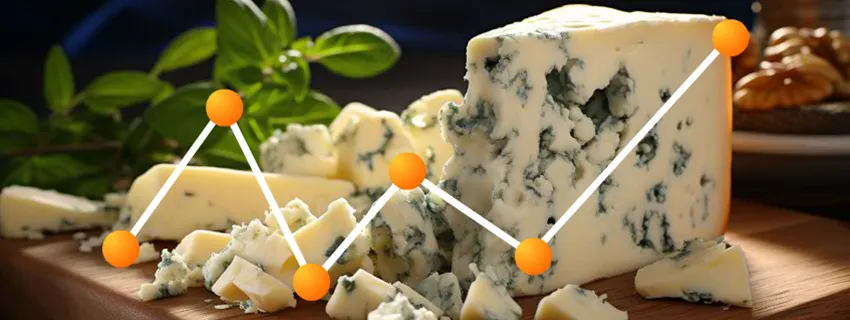
Gorgonzola cheese: calories and nutritional values.
There are around 320 Kcals in 100 grams of Gorgonzola. This cheese contains fats, proteins, salt, calcium and phosphorus. Vitamins A and B are also present (B1, B2, B6, B12).

The Gorgonzola sauce.
One of the most famous specialties based on Gorgonzola is undoubtedly the famous sauce.
Read more
Its recipe is extremely simple:
- Melt some butter in a saucepan;
- Add gradually: flour, milk and Gorgonzola.
- These ingredients should be mixed to make the cream.
The sauce can be used, for example, to garnish croutons or as a sauce for pasta.

What is a ‘blue cheese’?
‘Blue cheeses’ (known in Italy as ‘formaggi erborinati’), are produced using a particular technique inducing the proliferation of a particular type of edible molds. These molds give the product not only a very special flavor but also the typical green/blue streaks.
Some of the most famous blue cheeses in the world are the Italian ‘Gonrgonzola’, the French ‘Roquefort’ and the English ‘Blue Stilton’.

The right wine for Gorgonzola cheese.
- Sweet Gorgonzola: this type goes well with wines with good aromaticity and acidity, characteristics capable of balancing the aromaticity and fatness of the cheese. For example, Riesling and Gewurztraminer (better if late harvest).
Read more
- Spicy Gorgonzola: its strong taste requires an equally strong wine. Red wines with good alcohol content and structure could be the right choice, for example, Barolo, Amarone or Recioto. Valid alternatives, especially in the case of aged cheese, could be fortified wines (eg Marsala), raisin wines (eg Passito di Pantelleria) or botrytized wines (eg Sauternes).

Churchill loved Gorgonzola cheese.
It’s fascinating to find out that Sir Winston Churchill, the famous English politician, was an enthusiast of Gorgonzola. It is said that his love for this cheese was so great that he prohibited the bombing of the small town of Gorgonzola (and its dairies) during the Second World War.

Gorgonzola cheese and the Titanic.
Thanks to historians, it has been discovered that Gorgonzola, the ‘cheese from Novara’, was one of the delicacies served onboard the RMS Titanic. A first-class menu mentioning it has been found: this is undoubtedly an important testimony, which also shows the great appreciation of the British people for this dairy specialty.

Consorzio per la Tutela del Formaggio Gorgonzola: contacts.
Address: Via Andrea Costa, 5/c – 28100 Novara
Official website: www.gorgonzola.com
Mail: info@gorgonzola.com
Tel.: +39 0321 626613
Copyright information.
The images displayed in this page belong to WebFoodCulture and to the Consorzio per la Tutela del Formaggio Gorgonzola.

